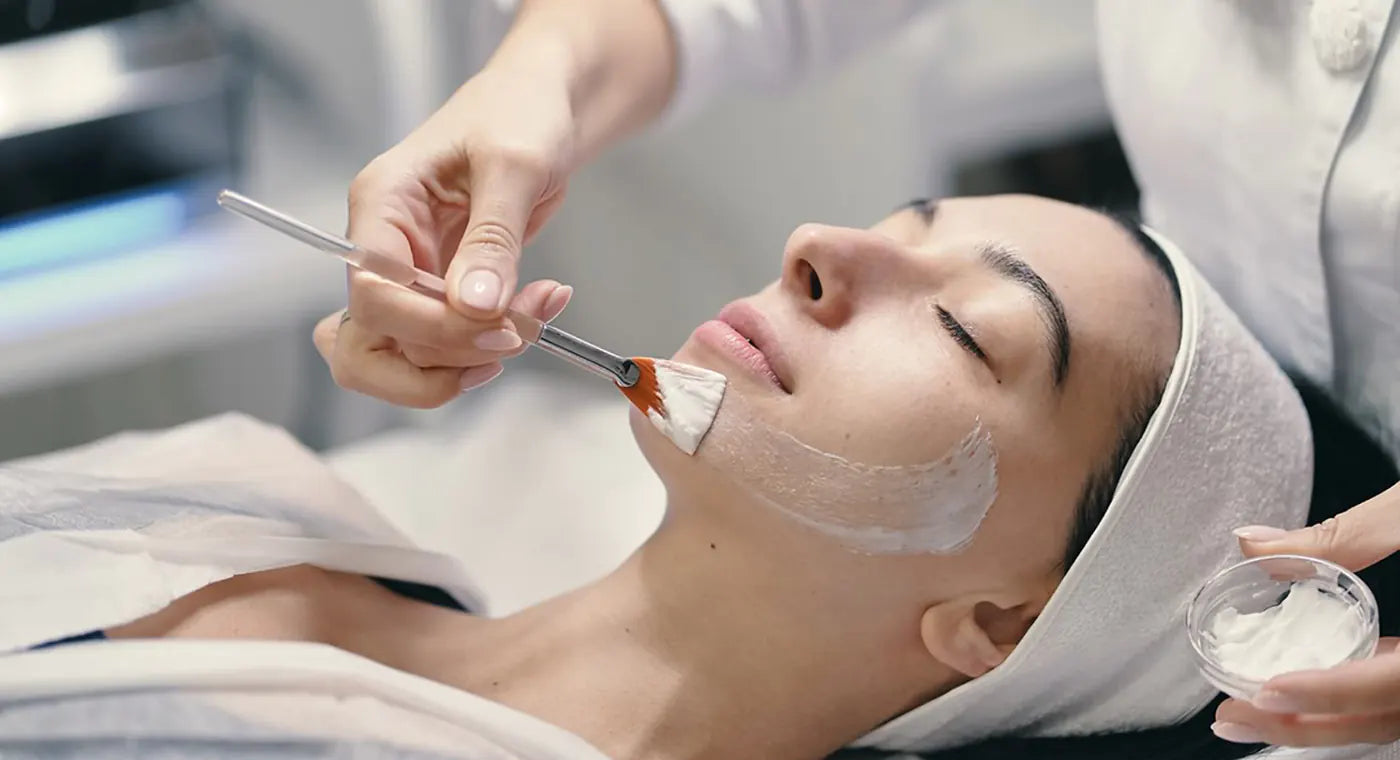
Different Types of Chemical Peels
Chemical peels have been improving the skin quality of individuals since the 19th century. Over the years, modern techniques and milder ingredients have produced impressive results with minimal serious side effects.
This blog will discuss the three types of chemical peels and their various benefits.
What Is A Chemical Peel?
As the term implies, a chemical peel involves removing the outer layers of skin on the neck, face, or hand to stimulate the growth of new, regenerated, and wrinkle-free skin. It is a cosmetic treatment that helps exfoliate the skin and induce new cell growth, improving drab and lacklustre skin’s texture and appearance.
Treatments can be customised to suit specific skin types and achieve aesthetic preferences. Although chemical peels can give the skin a radiant, natural glow, they can also result in chemical burns when performed incorrectly. For this reason, choosing a highly qualified skin care professional to perform the procedure is imperative. The aesthetician will make the chemical peel produce new cells that deliver a radiant, glowing skin.
During chemical peel, the removal of the skin’s top layer loosens non-living cells, resulting in a revitalised, refreshed appearance. The skin’s natural healing process will soon produce
What are the steps involved?
The steps involved in a chemical peel include:
- Preparation: a cosmetic specialist will clean your skin thoroughly to eliminate oils and dirt.
- Application: They will then apply the chemical peel solution to your skin. The solution may sting while it exfoliates your skin’s outer layers.
- Neutralisation: Sometimes, the decision will be made to neutralise the chemical peel solution to control the penetration depth, minimise the risks of chemical burns and other potential complications, and achieve the procedure’s desired results. A basic (alkaline) solution will typically be used, such as baking soda, to neutralise the chemical peel formula.
- Post-treatment care: your treatment specialist will share post-treatment care tips with you, including:
- Applying a soothing, hydrating moisturiser and non-abrasive cleaner
- Refraining from peeling the skin
- Drinking plenty of water to hydrate your skin
- Using sunscreen and avoiding prolonged exposure to sunlight
- Avoiding wearing makeup for several days after the treatment to facilitate healing
Types of Chemical Peels
The three types of chemical peels have different goals and objectives. Depending on the preferred treatment, the cosmetic surgeon will use a specific chemical solution to achieve the desired outcome Each chemical peel solution works at varying skin depths, thus achieving different results—deeper penetration produces bigger benefits. However, it also requires a longer recovery time.
The names of the different types of chemical peels indicate the depth at which they penetrate your skin.
Superficial Chemical Peels
Superficial chemical peels are the mildest of the three types. The outermost layer of the skin is removed to smooth out the skin’s texture and lessen the visibility of blemishes such as age spots and wrinkles. Skin peeling may occur two to four days after the procedure with minimal downtime.
Medium Chemical Peels
A medium chemical peel is stronger peel that penetrates the skin deeper than a superficial chemical peel. Medium chemical peels are able to penetrate the upper mid-dermis (the thicker layer of skin below the epidermis) using an exfoliating solution that increases skin flaking and cell regeneration.
Aestheticians typically recommend a medium chemical peel for patients with fine-to-moderate wrinkles, age spots, acne scars, uneven or mild skin discolouration, or a combination of these imperfections. The exfoliating effect of the medium chemical peel solution helps treat these flaws efficiently.
Your specialist will recommend one to two weeks of downtime after a medium chemical peel. During this time, you may experience discomfort, flaking, crusting, and swelling. The final outcome of a medium peel can typically be seen around 2 weeks following the procedure. However, some instances may require at least two additional peels to achieve optimal results.
Deep Chemical Peels
A deep chemical peel is the most aggressive of the three types of chemical peels. The strength of the peel makes it effective against skin flaws such as wrinkles, hyperpigmentation, melasma, scarring, and acne.
Deep chemical peels require pre-treatment that lasts up to eight weeks to prepare your skin, minimise complications, achieve uniform peel penetration, boost healing, and manage skin conditions, including melasma, acne, and rosacea. Your cosmetic specialist will apply a deep chemical peel solution that will penetrate the lower layer of your dermis.
Deep chemical peels often require at least two weeks of downtime following the procedure. Results become apparent after your skin sheds and heals after several months. Despite the lengthy wait, the payoffs are immense—the results of a deep chemical peel last for several years. It’s one of the most effective and enduring skin treatments available today.
Chemical Peel Benefits
Regardless of your skin type, chemical peels provide a range of benefits. The effectiveness of the treatment is determined by the number of active ingredients and depth of the chemical peel solution.
Chemical peel benefits include:
- Reduces fine lines and wrinkles: Chemical peels help minimise fine lines and wrinkles, especially around the eyes and mouth, by eliminating the outer layers of damaged skin and increasing collagen (a protein and component of connective tissue) production.
- Improves skin texture and tone: Chemical peels smooth out rough texture and improve skin tone by exfoliating the skin’s outer layers. Consequently, you will look younger and more radiant.
- Reduces acne and acne scars: Undergoing a chemical peel procedure removes dead skin cells and unclogs pores. The appearance of acne and acne scarring will be reduced following treatment.
- Minimises enlarged pores: A chemical peel reduces enlarged pores and makes your skin look smoother.
- Increases skin hydration: Your skin takes on more moisture, resulting in a supple appearance, following a chemical peel treatment.
- Offsets sun damage: Exfoliation and growth of new skin stemming from a chemical peel treatment helps treat skin flaws from sun damage, including discolouration, rough skin texture, and fine lines.
Flawless Aesthetics: Your Chemical Peel Specialists
Our dedicated team of cosmetic specialists and aestheticians at Flawless Aesthetics can help your skin look cleaner, smoother, younger, and more radiant. If you’re looking for premium chemical peel Sydney services, please contact us between 10:30 a.m. and 7:00 p.m. AEST, Monday through Friday. One of our friendly staff members will be happy to assist you.

